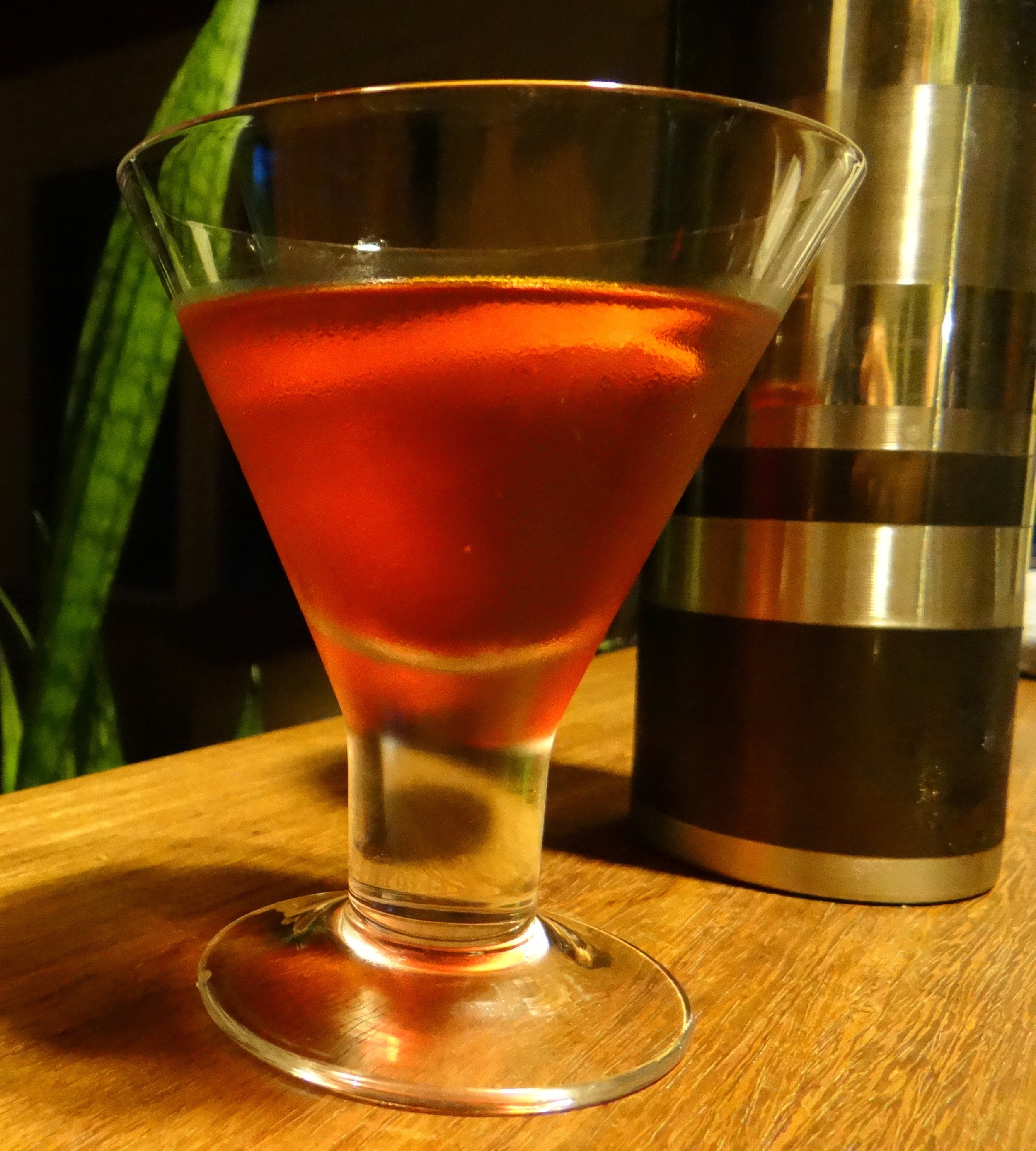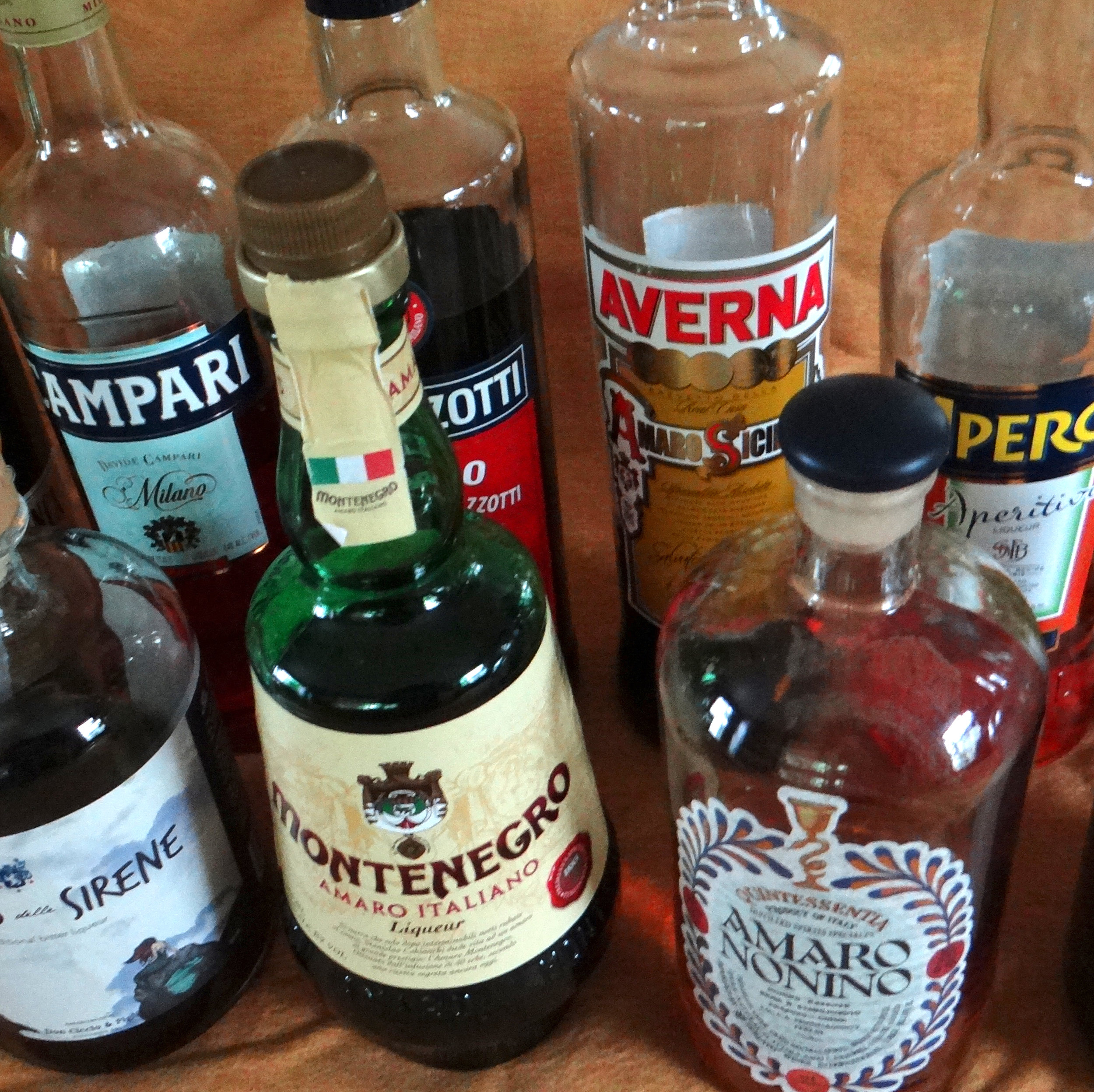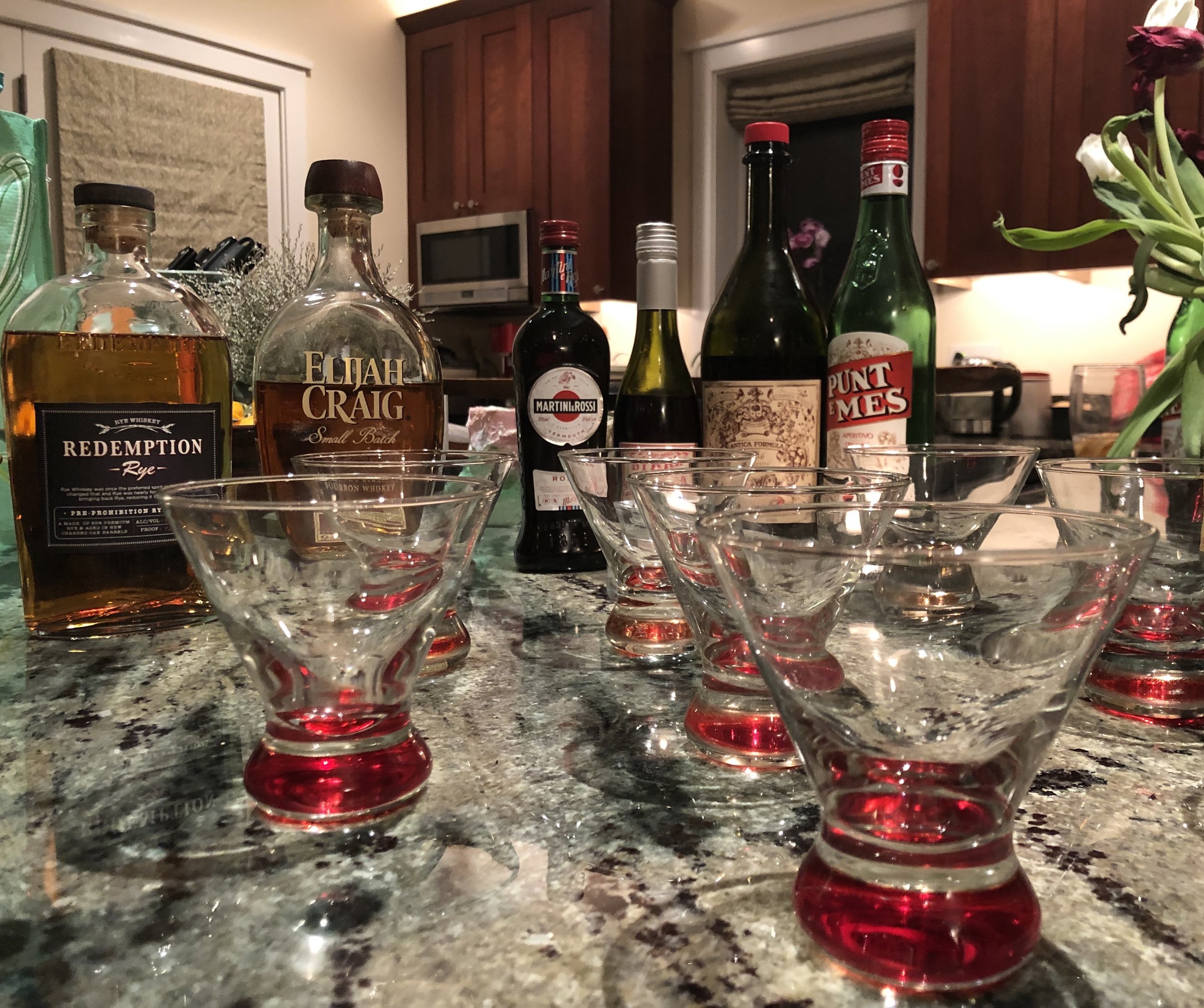Experiments with Negronis

My current fascination is the Negroni. It’s a classic cocktail from the early 20th century, a boozy variation on the even older Americano. The drink is simplicity itself: equal parts gin, sweet vermouth, and Campari, garnished with orange peel. Yet the combination of flavors is anything but simple. There’s the sharpness of bitter orange, the bite of juniper, a woodsy herbal background, all balanced by an underlying, slightly unctuous sweetness. Delicious!
Even within the constraints of this simple recipe, there’s an opportunity to play with different flavors. Some gins emphasize their citrus character, others bring more juniper, still others add floral or vegetal elements. Different sweet vermouths will punch up the woodsy, herbal, or spicy notes. Non-purists can modify the 1:1:1 ratio, usually by increasing the gin to dial down the bitterness. The only non-negotiable component of a Negroni is Campari (an amaro, a type of bitter Italian liqueur).
But the real fun happens when you begin to fiddle with the basic ingredients. The obvious starting point is to replace the Campari with a different amaro. An amazing White Negroni at the since-departed Milk and Honey NYC used Aveze, a canary-yellow gentian liqueur from France (so, technically, not even an amaro). A very different but equally tasty version from Portland’s Little Bird Bistro employed Gran Classico, which adds rhubarb and fennel to the traditional bitter orange flavor. Other options include the lighter Aperol or the much more herbal Braulio. It’s also possible to replace the sweet vermouth with dry, or use different aromatized wines like Lillet or Cocchi Americano.
Or you can even ditch the gin entirely. A fan of bourbon? Use it in lieu of gin for a Boulevardier. Variations that incorporate tequila or mescal are also a possibility. By this point, we’ve drifted so far from the original that it’s virtually unrecognizable. But the basic recipe of spirit, aromatized wine, and bitter liqueur remains the foundation for all of these cocktails. I encourage you to try your own combinations and devise a new masterpiece. The possibilities are limited only by your imagination. Here's my creation to get you started:
Fireside Chat
- 1 oz. Pierre Ferrand 1840 cognac
- 1 oz. Carpano Antica sweet vermouth
- 1 oz. Rabarbaro Zucca amaro
- grapefruit twist, for garnish
- cocktail shaker, ice, bar spoon, martini glass or coupe
Steps
- Half-fill the shaker with ice.
- Add liquid ingredients and stir until chilled.
- Strain into a cold glass (I chill mine in the freezer).
- Rub the grapefruit twist around the rim of the glass, then drop into the drink.
h.




